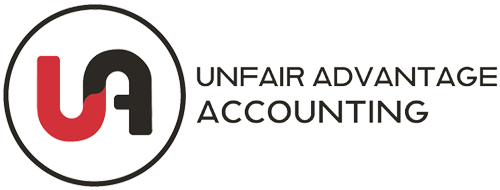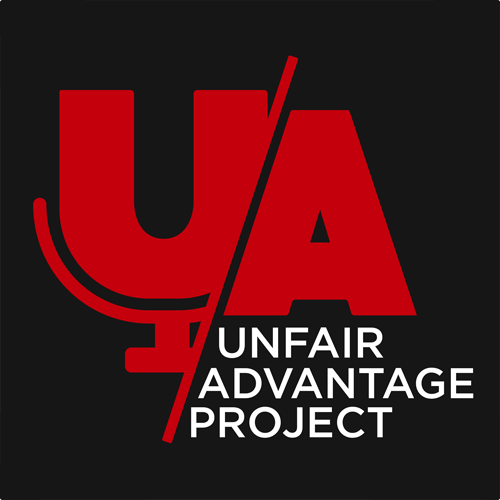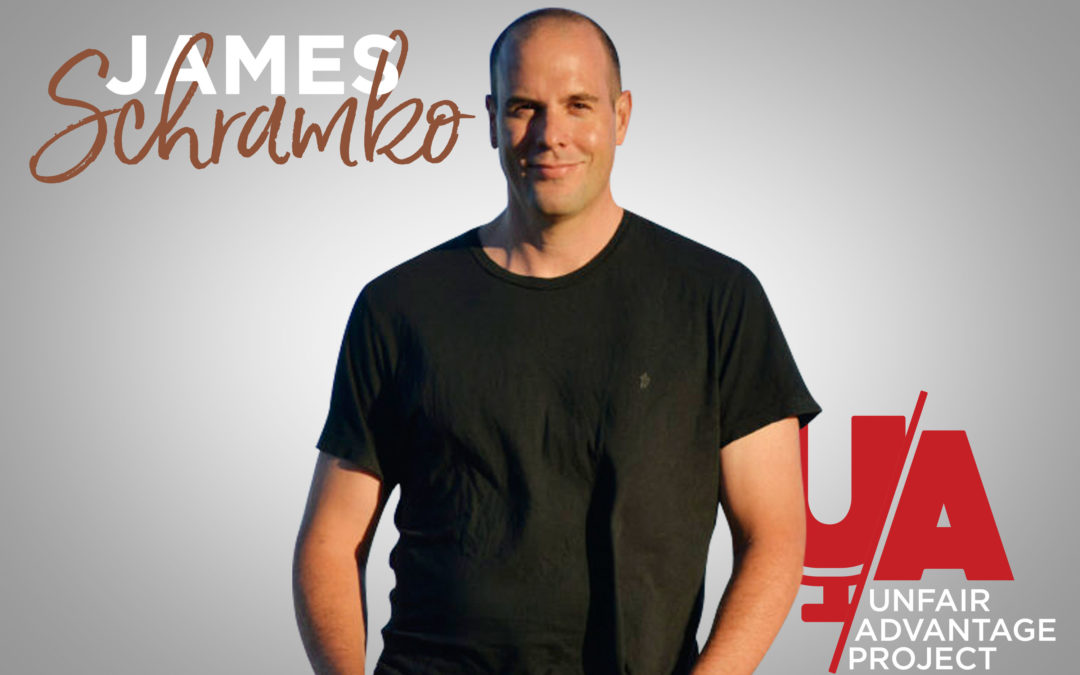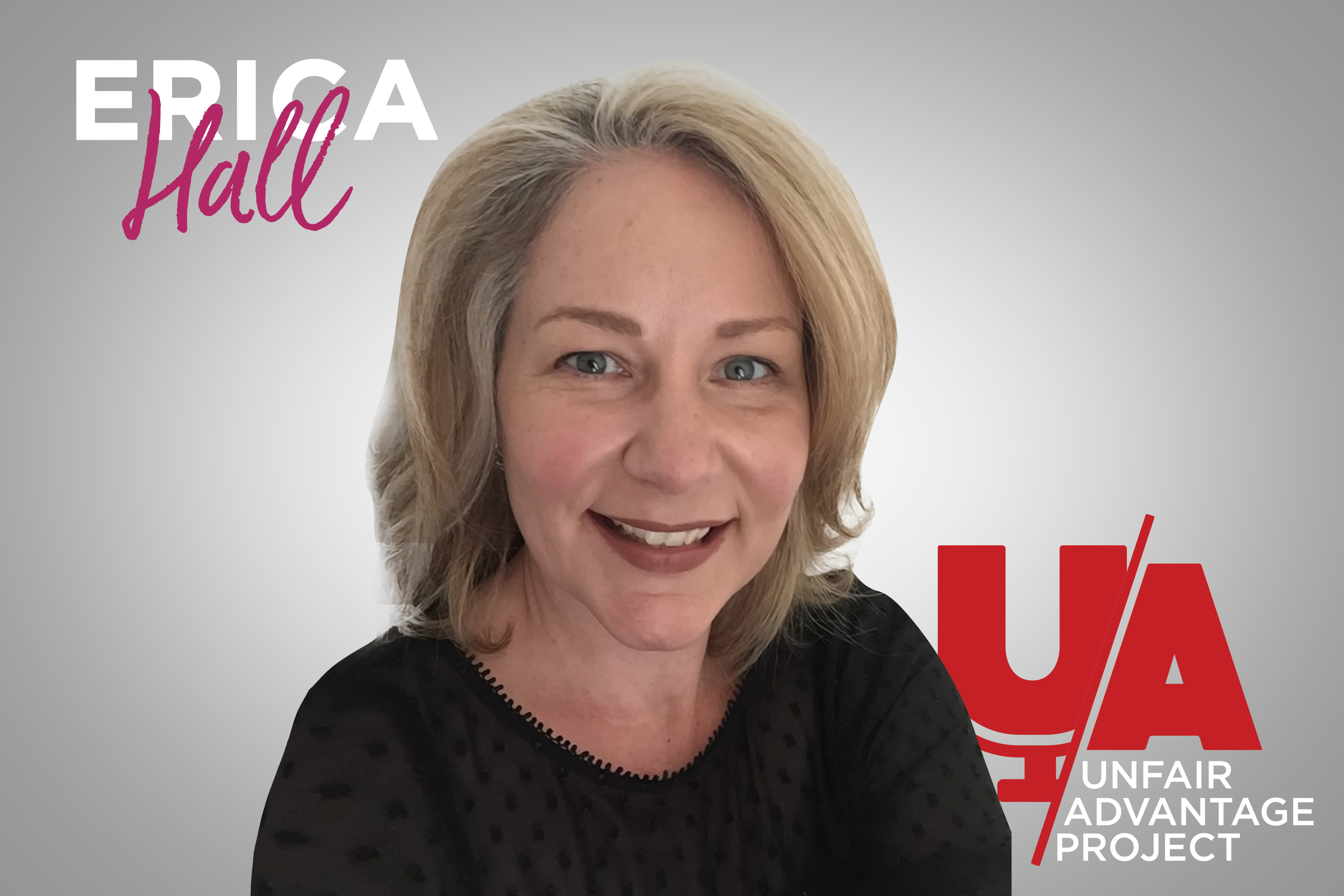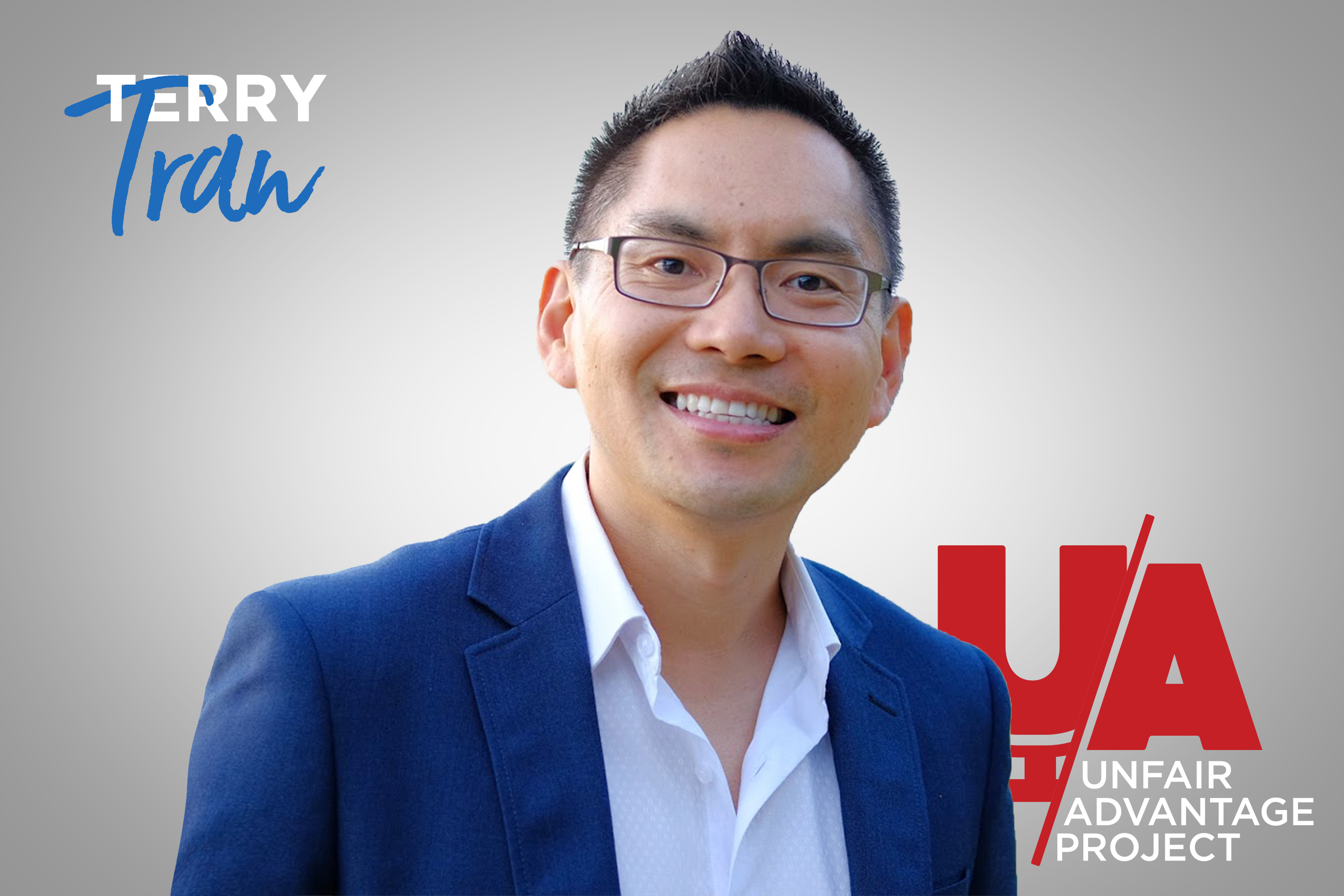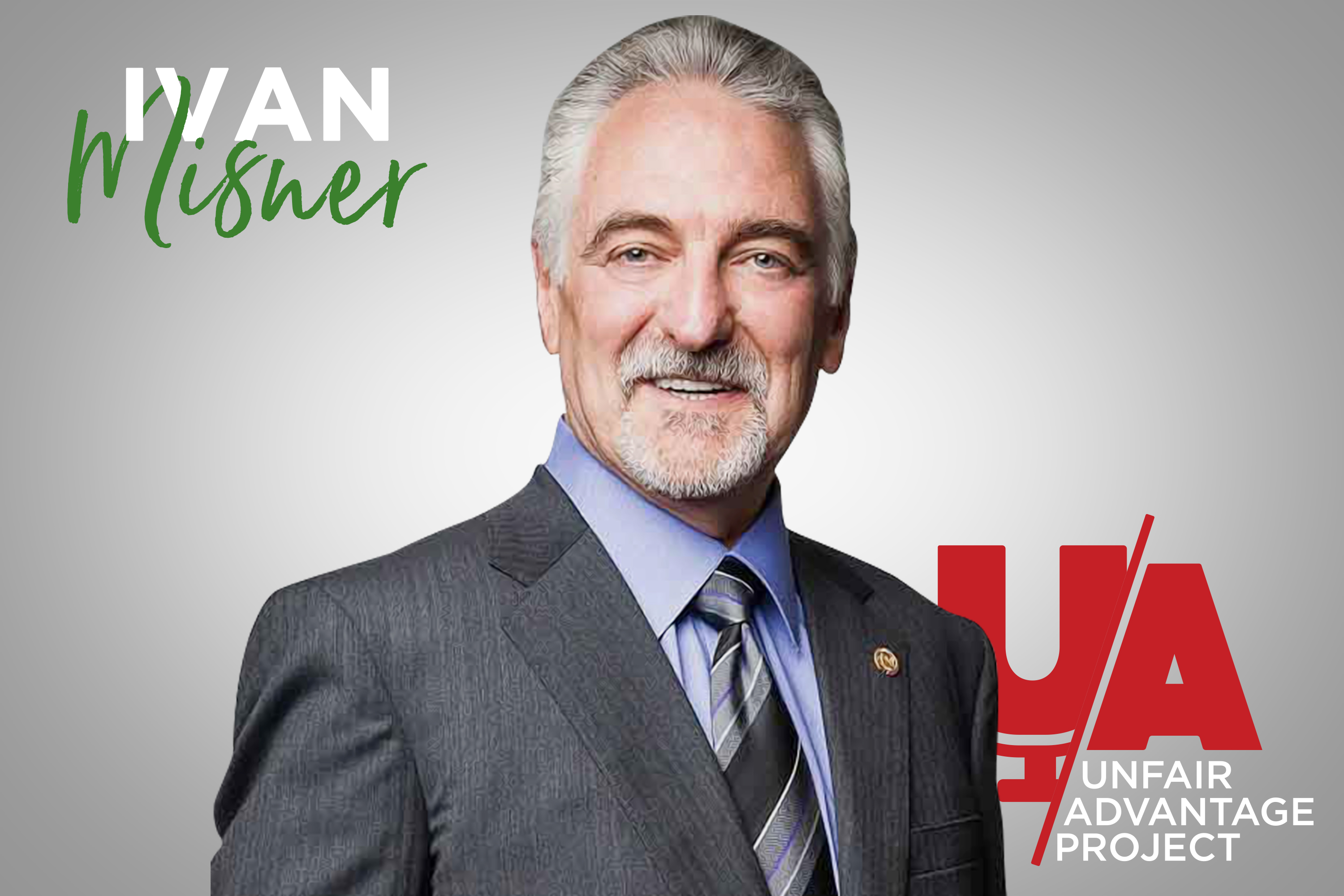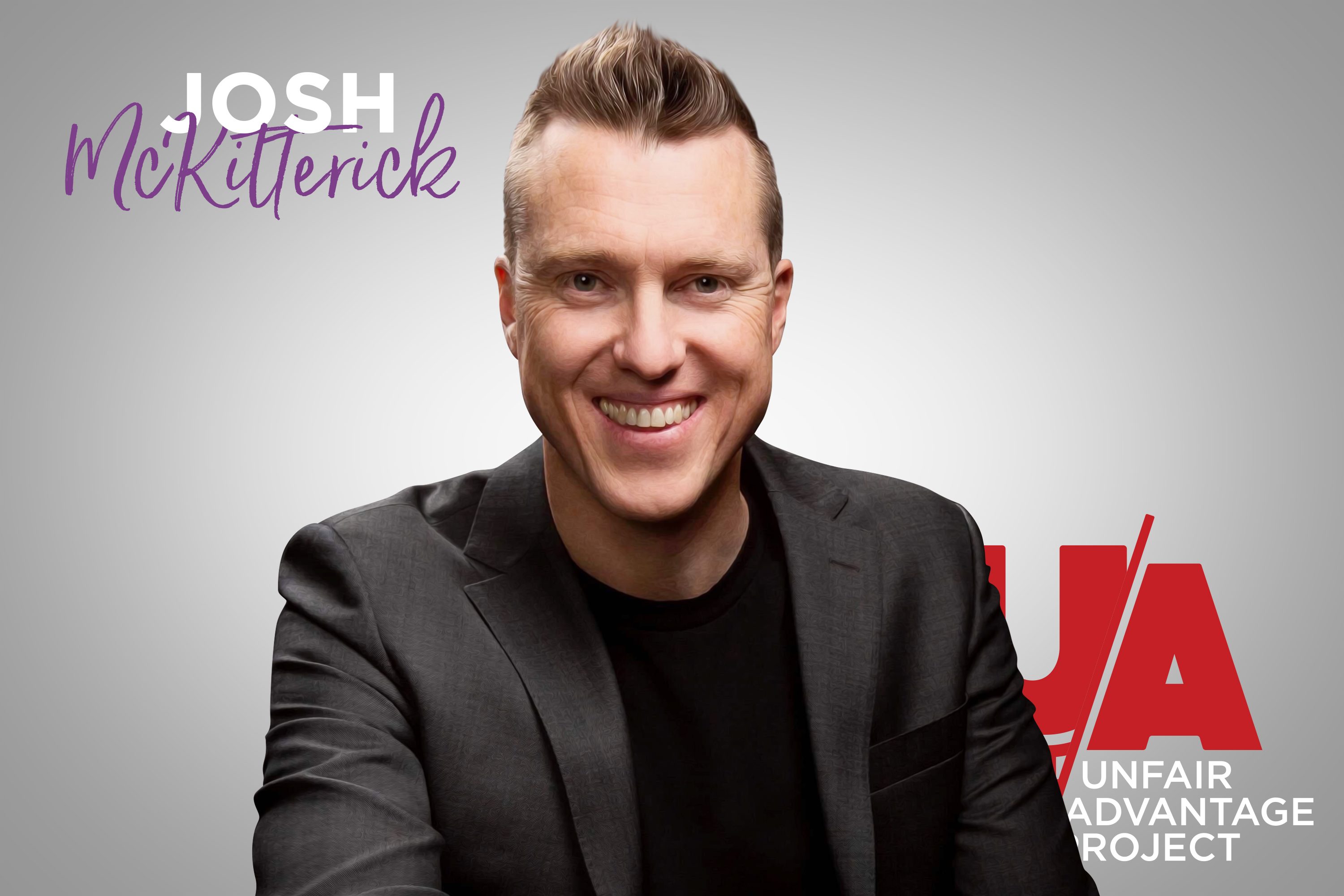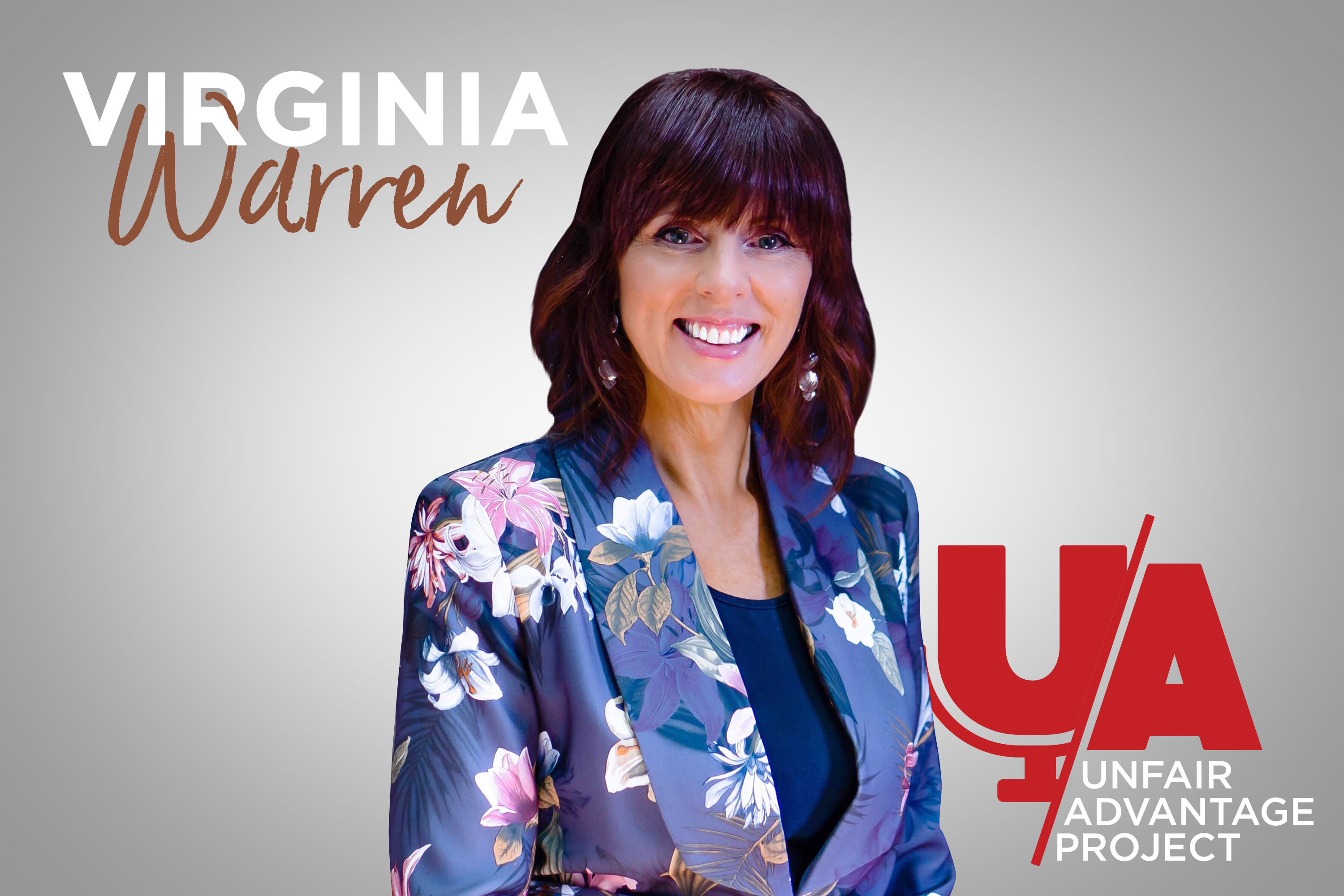Podcast: Play in new window | Download
Subscribe: Apple Podcasts | Google Podcasts | RSS
Show Notes:
James mentions about a mafia plan. [02:20]
The book that took too long to publish. [02:25]
Is it ideal to self-publish a book? [07:57]
James elaborates about his mafia plan. [09:54]
Mind mapping: how sensible is it? [10:09]
James talks about some Russian connections he had. [13:58]
An anecdote worth pondering. [14:52]
Why James chose simplicity over complexity? [16:12]
James shares about an experience with his student. [18:13]
How does James approach his students’ current status? [20:45]
Does business cards matter to James? [22:21]
James recalls an experience with a Hollywood star. [24:19]
What are the four domain areas James considers important? [26:43]
How James sees self-effectiveness? [26:48]
James talks about some issues with setting prices. [30:48]
How important is team and scaling? [36:48]
What is effective hourly rate? [39:29]
Follow James Schramko:
Website – https://bit.ly/2BigLAm, https://bit.ly/2FvXaAZ, https://bit.ly/2OPLjgo
Facebook – https://bit.ly/2KjjX1K
Twitter – https://bit.ly/2zcNGVy
LinkedIn – https://bit.ly/2FwxsfI
Narrator: Welcome to the Unfair Advantage Project – unique perspectives practical insights and unexpected discoveries directly focused on giving you the unfair advantage. Introducing your hosts Nadia Hughes and Terence Toh.
Terence: Welcome to the Unfair Advantage Project. I’m Terence Toh, founder, managing director of StrategiQ Corporation. I’ll be one of your hosts today and I’ve got Nadia here with me. Good morning Nadia.
Nadia: Nadia Hughes from Unfair Advantage Accounting. And this is very exciting because it’s the first time I’m telling that I am no longer with another firm.
Terence: Awesome! And today we’re really excited to have a great guest. James Schramko we’ve got. He’s the founder of SuperFastBusiness. He runs SilverCircle. He’s an author – really established author now of a book called Work Less Make More. And before I let James even talk, there’s a lot more stuff that I can attribute to James. So, James has been a mentor and a coach to me for a few years now. I’m in the SuperFastBusiness community. I’ve been in SilverCircle. And in fact, I think for a little while I was the only one in SilverCircle without a business because he helped me to sell a business that I had. I went in there with a, like a two-year plan to sell a business within about three months. And actually, James is kind of the inspiration for this podcast. I used to listen to James’ podcast quite a while ago. And still do, mind you, I still do. Also responsible for introducing me to surfing which is kind of changed my life to some degree. I’ve been doing that for just over two years now. First time ever was that one of James’ events. We’ve been to the Maldives a couple of time, made me hold my breath for a hell of a long time. So, we’ve got a little bit of history now. James, welcome!
Nadia: Welcome!
James: Thank you for having me. Great to meet you Nadia.
Nadia: Thank you very much.
Terence: One thing that I think really great that I’ve seen you do, and I love the podcast and seeing how that’s kind of progressed for you. But one of the things I really love that you did was the book release Work Less Make More. Can you give us a little bit of history on how that came about and how it kind of worked for you?
James: Well, the history goes back further than we might have thought. I had this mafia plan probably about nine years ago which I’d written about us. It was a mafia plan because it was I was reading about L.A. Gold Rat and I think that it has mafia offer in there, it’s an offer so good that you can’t refuse it. And my mafia plan was a business plan so good that you just can’t not do it. And I’d mapped out all the core components of what I thought would be a fantastic business and there were elements like traffic leading into an authority blog, podcast, an e-mail list, a membership higher-level program, masterminds, licensing services and affiliate offers and in one corner was a book. So, I’d written this down some time ago, nine years ago, and it was the only part of my plan that I hadn’t gotten to by about five years ago. When I actually knew that I needed to get someone to help me with this so, I hired a lady to help me write my book. And she had been working for a publisher. And she came and visited me, she interviewed me. She went through my courses. We did the brief and everything and then I paid her money and then nothing – nothing at all. Like a couple of years until she had writer’s block. It was just too much, it overwhelmed her. She couldn’t figure out where to start. She got stressed about not delivering and then it just dropped into a hole. And by the time she came back to me with a draft I kind of moved on. I was knee-deep in running my SEO business, I had moved all this stuff going on. So, it just wasn’t the right time and I left it. And also, I wasn’t in love with the idea of what she’d come up with. It wasn’t sort of matching the expectations. So, then I was invited to speak in the Philippines at an event. I put together a presentation for that audience and that audience were predominantly bloggers who are really nice people and are often creative and have great ability to write and publish, and they’re artsy and design-wise fantastic. But sometimes they’re not making good money. So, my presentation was really speaking to them. They’re working hard but they’re not making good money. And that was called a free leverage points or something. And that was the seed of the presentation that a lady in the audience sat through. And then at the end she came up to me and she said why don’t you have a book. This would be a great book. And I said Yeah, I tried the book, I almost had a book. It didn’t happen for whatever reason. She has I will help you. I said Okay done. So, I started it again a couple of years. This is two years ago now, maybe three. And through the process this lady’s called Kelly Exeter. We went through the same sort of thing – zillion audio transcripts, products, answering questions. And also, I’d wrote, I wrote this email series for a launch that i was doing as an affiliate where I’ve set one story per day for a week and she got these stories she said these are amazing stories. These have to be in the book. So, I gave her all this stuff and then about 1 percent of it made it into the book Work Less Make More. It came out in December 2017. Sometimes I don’t know what year it is right now. And it’s been really successful, well-received. It became a best-seller. I sat in this office here in my Philippine’s house and recorded the audible version of it in June 2018. And that got released and it’s selling like two to one of the Kindle. Every day it sells. It’s great. If you have a podcast and you have a book, make sure you read your own audible is my tip there. And since the book came out basically everything that I have for sale sells out in advance. Maldives is now sold out to 2020. My coaching program has new members applying all the time. It’s a really great front-end for the back-end of your business. I wouldn’t say a book is a good product on its own which I think a lot of authors have this vision of. They think that’s going to be the thing. It’s usually not the thing. If you have the number one top-selling business book you might make a couple hundred thousand dollars. However, if you put products and services on the back of that, you’ll make a couple of million dollars from that same book funnel if you like. So, that’s my sort of book story. Hopefully that was entertaining.
Terence: That’s awesome.
Nadia: I actually did like it. That’s just the fact that it started this epic failure and a complete deflation. Suddenly all of us by random chance ups, well chances are random. I’m just… English as a second language. Basically, you could start writing again and gone through the entire labor pains again…
James: Yeah.
Nadia: That’s just… it’s actually the tenacity of your character. I just, I wouldn’t be going through second part, I would just give up. And another thing reality check is a lot of people, you’re quite right. I’ve got like about five or ten clients writing a book in the hope that it’s going to be end all. They are going to become rich and retire from this book. And I read their books, usually really good because they wrote them, it’s the masterpiece of their life. They are smart, they hire somebody to help with the style and editing and everything. But what I don’t see, I don’t see how it’s going to be able to self-support them for the rest of their lives because looking at the figures.
James: Really it depends to some extent on their cost of living. And it also depends on how they publish it. If you go through in a publishing house, you won’t see much of the money and it won’t be for a long time. it’s underlaid. I’ve got one client who published a book and went out early in this year and he’s still yet to see a dollar come from the royalties which the publisher is holding on to. And there’s also had to do with print runs and have commitments there. So, if you self-publish you can increase your chance of the margin but you also have to balance out whether you’re going to get that exposure, this is hard of you to get into airports and stuff. Well I think he could make a hundred or two hundred thousand dollars from your book and audible if you self-publish and if the business market for example and if it sells quite well. Far why not make you a couple million dollars off the same effort if you can put a plan in place to capture, I mean people investing in the book and reading it. They’re ready to buy the next thing if they like the book and if the book’s good. And also there is that disparity sometimes between what we think would be a good book and what becomes a good book for the audience. Because it’s tempting to get a bit self-indulgent with the book and to make it satisfy your needs. But really the book is for the customer and the book has to be helpful to them. So, there’s that creative versus practical balance.
Nadia: Well, it’s also a very psychological me bias. Me bias i am always the centre of the universe and I’m interesting person well the rest of us don’t even hear.
Terence: That’s a great story to begin with. And I haven’t actually heard that before so thank you for that. I also don’t remember talking about the Mafia plan. And the book being a part of that. Can you tell us a little bit more about the Mafia plan like?
James: Yeah.
Terence: Maybe how about the picture of what the rest of it looks like? Can we share that?
James: Well you’ve got access to it in SuperFastBusiness. There is a story behind this. When I wrote the plan, it was my personal plan. It was like everything I knew at the time from all the learning I’d done for years back, decades in the car dealership. And studying all my mentors and greats and books and so forth, I put it down to one page on a mind map. I had this mind mapping software. And when you get mind mapping software, you won’t have to make my own maps. I mean even a crappy mind map looks impressive right? Even if the words on the bubbles aren’t that useful, it’s a mind map. For me it’s amazing. So, I’d put it in his mind map. And at the time I was invited to speak on the platform for a major conference in Australia and they had a couple of other speakers. It was a multi-speaker event. And one of the other speakers confided in me. He said that he was down to his last dollar and he couldn’t even afford to fly home. And I took pity on this guy who’s an American guy and I said why don’t you come over to my house? We were in Sydney. We did Melbourne, Sydney, Brisbane, New Zealand. When he came to my house and I’ll just break down your business with you and see what opportunities you have. And anyway, I put out my mind map, my mafia plan and I just stepped him through how he might do this. And it was actually on a computer screen at that time. Anyway, I went down to make his coffee and while I was making coffee, this guy emailed the map to himself, from my email to his email. He basically stole it. And it turns out that this guy was like a shady crook. All of his testimonials were made-up. He didn’t have the success that he claimed from stage. It was my like massive eye-opening into the crimes that go on from the speaking circuit. And that’s why I stopped speaking back then on from those multi-speaker events where they sell things because the ethics in that industry were just appalling. When I alerted the conference organizer about it, he knew about it. And said well I can’t be on the stage with this guy. Anyway, because the Mafia plan was now in the wild so to speak, I thought I’m going to publish this. So, I made it the feature for my FastWeb Formula 3 event. I’m pretty sure it was that one. It’s on the starting page of the workbook in that conference. So, I took people through the Mafia plan step-by-step. And we’re talking quite some time ago. I’m guessing it’s probably, by this stage it might be 2012 or so, 2011 maybe, somewhere around then. It was seven or eight years ago. I published it for my customers and behind closed walls. And if you pull that Mafia plans today it’s still 100% relevant. Like there’s just virtually nothing that I would change on it. If you look at my business, it represents what that mind map looks like. So, I drafted the map first and then I built it. You know if you wind back even before that, when I started learning about online marketing in 2005/2006, the stuff I was writing down then in my book, I had different coloured pens and I had an A3 size sheet which is big. It’s like that, like a sketchbook. You would think… If you’d found this workbook, if you’d stumbled into my kitchen and found this workbook from the diagrams that I’d drawn, you would think you’d stumbled on to NASA’s space shuttle wiring diagram. It was unbelievably complex. I had mapped it to a level of complexity that was impossible to build. Like every first homeowner does with that with their architects. They map out a plan and then they get the quote from the builder and it’s like 6 times more to build than what they expected. It was a rookie mistake. So, that’s… The beauty of the Mafia plan was how simple it is. I’m happy to share the Mafia plan with your audience if you want to put it somewhere where…
Nadia: It would be good because it’s a very catchy name I must admit.
James: Yeah. Well while it would appeal to a Russian sensibility.
Nadia: But I can work with it. I will talk to your guys, you talk to my guys to put the Mafia plan.
James: So, I guess I took some inspiration for this from my Russian links. Like I had some very successful Russian customers when I was at Mercedes Benz. They would come and order Black S500 with all the options. They were very wealthy. And he would sit with me at a private lunch and he’d take me to lunch to celebrate his car and he would tell me the secrets. I can’t do the accent I think it would just come across us…
Nadia: I can help you.
James: Yeah. Well you could say this. You say James this is the secret.
Nadia: James, this is the secret.
James: Yeah. The thing with Russian technology…
Nadia: The thing with Russian technology…
James: is it’s simple and it works.
Nadia: It’s simple and it works.
James: Yeah. He’d say you James you look at the Sputnik. It beat the Americans into space and it’s just a ball with a few prongs on it. It just did the job.
Nadia: Can I interrupt? This is encapsulated in a famous anecdote. Americans spend two million dollars to design a pen which can write in zero gravity. Russians took a pencil.
James: It’s true. It’s a nice story. It’s not quite true but it’s a good story.
Nadia: It encapsulates Russian character.
James: It does. And he’d tell me about a gun. He’d say James you know with your gun you can cross a river, get it wet and still pull it out of their holster and fire it. You can’t do that with an American gun right? So, I took from this that this whole concept of Sputnik has been inspiring to me that just go simple and get to work. I was thinking about this earlier today. I did a training yesterday for my members and I do a training every month. And the training is quite simple in how I put it together. It’s just some slides. I don’t do fancy pictures or whatever and I just talked through it. And I could turn that into a thousand-dollar product. And I could have modules, and I can gamify it, and I could do illustrations, I could have check sheets and workbooks and I probably will do that at some point. But to some extent my entire product line to this day is still my minimum viable version. It’s the simple version that I could one day later on go and make it complicated and that. So, I went from the complex wiring diagrams where I implemented nothing to very simple executable plans. It reminds me of General Patton while we’re on the military and while we’re doing the Russian-American thing. He said something along the lines of a good plan violently executed today is better than a great plan tomorrow or something like that. I probably butchered that a bit. But in other words, just get the simple version going and then enhance it later.
Terence: I think you’re pretty close on the quote by the way.
James: But it’s a tough one off the top of my head. I was, I was inspired by General Patton from another mentor of mine. He’s an absolute lunatic that I worked for. He made me watch Patton like 10 times, the movie, 10 times. And there were so many lessons in that movie for business owners. It’s ridiculous.
Nadia: I had a very lovely meeting today in the morning, first thing in the morning with the clients, and we have this exactly the same discussion about it’s better to implement something simple which you own rather than something complicated which you’re not clear on details. And when he presented me with his projections of the budget and what his business will look in the future, I said what’s the logic behind these projections? The logic was simple. I feel like it because look at it for two years I’ve been stable. There is no chance that without changing anything I will be jumping on five mil turnovers. And this is what was very simple discussion. But he owns those figures. Because he just puts them on the picture and based on his very trivial logic, he came up with his version of business plan. And he was embarrassed initially but then I said that’s good. That’s good because this is your plan, not my plan. He said there is no formula behind this. I said that’s good again.
James: And another thing I found is quite often we already have the pieces available to us. We just have to arrange them properly. One of the most transformative coaching student results that I’ve had in a short time was the student who was making thirty thousand dollars a month. And in the first call, I identified the pieces that he was already holding. It was like he was holding a packet of cards and I just had him sort the Aces into his hands that he could play, and he went to three-hundred dollars a month within a month by rearranging what he already had. He had all the pieces, he just didn’t recognize it.
Nadia: So, in a general term, I know there is a privacy for your clients and everything, but in a general term, can you identify what kind of pieces he was overlooking?
James: Well he was very good at doing this one particular thing. He had an expertise at one thing and he was doing it for himself. And he was trying to use that one thing to go and play in a market where that one thing was working really well. And everyone in that market was… didn’t know how to do that one thing and I said Why don’t you just provide the service for everyone else in that market? To do that one thing instead of you trying to go and compete in that market with your one thing by yourself? And he…
Nadia: The concept of comparative advantage.
James: Yeah. He basically became the service provider for that entire market who was the best in the world at that one thing. So, he didn’t even have to reveal how he did it. He just had to provide that service to them. That was a secret.
Nadia: Well, there is a power of being master of one button but really good button.
James: Yeah.
Terence: And the power of simplifying.
James: Yeah. He already had everything he needed. All he had to do was actually go to the market and say Would you like me to do this for you? And they said please.
Nadia: Very basic again. Becoming to a very basic concept with very complicated coach.
James: He’s a basic guy what can I say, I don’t…
Terence: I think that’s one of the messages here. I mean if I have a look… you’re talking about the NASA Space Shuttle wiring diagram which I love, right? And they’re just bring that down to kind of one page and that whole thing about kind of simplify. Bringing something back so it’s not overwhelming. So, we’re not getting stuck in that condition of overwhelm, stuck in kind of that place of inaction maybe where we just don’t know what to do. Just one step at a time. Really simple.
James: Paralysis. I think most people are just scared to continue learning, and absorbing, and watching, and studying, and planning, and thinking, and hoping, and that they never actually get stuff done. So, I’d say a huge part of what I do for my students is if they show me a NASA space shuttle wiring diagram, I say this is great and maybe one day. But for now, what would be the first step in this? Then I would circle a little tiny part of it. So why don’t we just do this bit for now? Okay? If we do that then we could come back and have a look. We never get back to the big thing because we don’t need the big thing. That the ideas are actually quite simple, the macro ideas of having a successful business. And the one thing that you absolutely have to have that most people spend all their time avoiding and never approaching is just an offer that converts. If you could just have an offer that you could put out to the market that someone could say yes to and give you money for that, then that’s all you need to start with. And then from there everything else can happen. You can build your team, you can change the price, you can get an office, get your business cards if you really want. All those good things they come after the offer that converts not before.
Terence: So, I remember a coaching conversation that we had. I think it went up when I was in SilverCircle. And I said to you…
Nadia: It sounds like a SilverCircus.
Terence: SilverCircle.
Nadia: Circus.
James: On the front of a Mercedes, that’s a silver circle. Just put a star on it.
Nadia: You’re all bunch of clowns. You’re actually…
Terence: No, no. We’re not all like that.
Nadia: serious people.
Terence: But we were talking about it because I had to set up my brand, because I’d basically gone in there with the business sold that. So, what’s next? And I said to you I’ve got to go and get… now I’ve got to go and get my business card done. And I think what you said to me was Forget the business cards. Nobody needs business cards. They need help.
James: Yeah. Exactly. Let’s Just start with the customer and then work backwards from that.
Nadia: Well, I had yesterday a conversation with a client, a potential client who is meeting again. And he basically said can you please give me a price for your services? And I going to him what services? And he gone Well what are you charging? And I said well I charge a lot for a lot of things but what I’m not interested is selling my services to you at all. He said What do you mean? I said What problems do you have in your business? Tell me three main pain points just how you feel right now. If I can solve one of them and you’re happy to pay for this, me solving this problem, that’s the price we’re going to agree on. I don’t have a menu of services apart from compliance which is just really basic approach. But it’s all about meeting your needs. And he felt relieved. He gone Okay well it makes kind of sense. I said that there is going to be very difficult client because he’s stubborn he’s intelligent. It’s one of those nightmares when they analyse everything but this kind of cut through him straight the way.
James: I’m stubborn and difficult. What are you trying to say?
Terence: I think what you’re coming back to those value-based pricing and actually solving a problem for someone.
Nadia: Thank you for summing it up.
Terence: I think I’ve got the summarizing thing from James actually. Because every time you have a conversation with James he would just summarize it. And feed it back you say oh that’s genius.
Nadia: Well done. Yeah, cool.
Terence: Did I summarize that okay though?
James: I would say it’s spot on. It works almost all the time. I’ve only had it not work once. That was a cultural thing. I had a famous Hollywood movie star wanted to meet me in the basement of our hotel in Sydney and he had you’re staying under the name Mr. Black. And I met him in the basement, took an M class Mercedes Benz. He wanted to buy it for his mum and he said Alright sell me the car. And I said Well can you tell me what your moms got at the moment? And he is why does it matter? She had a land cruiser. And I said Okay well I’m just interested to know what she’s got because then I could tell you what’s different about this and how it might be nice. And he goes look, shut up and just sell me the car. You’re the worst sales person I’ve ever met. I said alright well it’s got ASR, ESP it’s a V6 165-kilowatt all-wheel drive transfer case blah blah blah i just went through all, just tech dumped it everything you’re not supposed to do as the salesperson and he goes I’ll take it. Anyway, it was 30 seconds after telling me I’m the worst sales person he ever met. He’s writing out a cheque for the car full price. Thank you very much. Then he said we should give him an S500 because he’s a famous Hollywood movie star appeared in this movie. And I said I think we’d probably prefer that you just pay for it. But yeah. Some cultures, especially the US culture, they sometimes like to be sold to. But that’s just because they’re used to it and it’s normal for them. But certainly, if you go to Australia or the UK markets, you definitely want to be more value-based and consultative with your approach so that you don’t come across as salesy which is the exact opposite of course.
Nadia: Well, that’s the point. What you used to. So, they’re conditioned to this type of arrangement and they’re very transactional cultures. When you come to, for example Russian culture, you can’t sell anything. If you were not drinking with me the night before, forget it.
James: Alright.
Nadia: We haven’t got that relationship going. Why should I buy from you? As simple as that.
James: Very interesting.
Terence: So, James… Just say when you had some conversations about how your coaching kind of works, what are the most effective levers that you find in a business? We’ve already spoken about some of I’m sure. When you get a client, comes to you and say hey I need help.
James: It depends what they come in for help for are. But it usually fits into four different domain areas. One area people fall down on when they get to a certain level of their self-effectiveness, they just get a little bit overwhelmed and overloaded and unproductive – no routine, not sleeping properly, don’t know where to focus. It just gets all frazzled. So, the leverage for them is to help them fix that because they are the base on which their business especially if they were the founder and the expert in the business. If they’re not right, the business can’t really progress. They’re holding it back so, I get them fixed.
Nadia: How do you get them fixed? What are the major things they should be doing?
James: Well I might subscribe to them, things that might seem odd to them. Like I might ask them to clear out their garage or I might ask them to take an afternoon off and go to a movie with their wife instead of working for the afternoon. Some of them really struggle with that. They’ve been conditioned to be a workaholic. And for them to take time off during the working day is almost impossible. I’m might prescribe to play PlayStation every day or take up surfing or to go cycling more. I find out what they’re interested in and I ask them to do more of that. So, one of my recent student is cycling every single day and he’s found a passion for life again and he just, he just loves… and his business is flying because they realized they’re not required every second of the day and they can find leverage points outside. But I also talk to them about eating properly, sleeping properly, time blocking. So, for example I do my work on Tuesday Wednesday Thursday. So, I have three days on and I have four days off. And using scheduling tools, getting off the devices less time on the computer, all this sort of things will really help someone reign it in. And then decision-making matrix so that they can just let go of stuff that they think they’re holding on to like throw their to do list in the bin and never look back.
Nadia: So, what’s the theory behind it? Because there are a lot of things, layers behind this kind of crazy method we’ll go and clean your garage while your businesses in such a turmoil. I can kind of guess what the reason behind it. You can just let us know the theory.
James: Well, I think it’s a metaphor for holding on to baggage and unnecessary items. Like the person who’s got all that stuff in boxes spread it around the place and scattered in, probably their offices like that and their business is like that and their mind is like that. So, if you’ve ever had a computer that starts going slowly and then you do a defrag or you clear the cache. Or if you have an Apple and you switched it on and off and it resets itself, it’s like that. It’s just clearing the mess out so that you can start clean. So, I like… actually I refer people quite often to the book The Magic of Tidying Up because that mindset is good luck. Just hanging onto the stuff, you absolutely love and let go the rest. We can do that in our business too. Which tasks are bogging them down? Like when I have coaching students I actually score them on a spreadsheet as to how excited I am to come to the call with them and how much impact I can have for their business. And if they’re not five out of fives, then I’ll clear the garage as well. I’ve got to love what I do or I’m not doing it. And so, if you’ve built up bad habits in your life, that’s going to translate across your business. I think they go hand-in-hand with the business owner. Look at Elon Musk in the last week, he’s the business owner and he’s put his company in so much strife they’ve had to fine him 20 million dollars and take him off as a chairman. But I think they’re intertwined.
Terence: Yeah. I love that idea where you’re actually scoring clients. And if that’s…
James: That’s a new thing Terence. Yeah.
Terence: Is it? I like it.
Nadia: Are you worried?
Terence: I don’t know.
James: You get a good mark for joy
Terence: Yeah.
James: Things like that.
Terence: Yeah. Alright. So, first thing is overwhelmed personal effectiveness and getting him to zoom in on their focus. What would be the next thing?
James: Some people come to me with the problem around like not sure how to price things. Their business model strategy thing like the, an example one guy is very good at what he does, and he was running workshops like every three months in a particular state in America. For people he’d spend thousands of dollars. He goes there, spend a few days, do the workshop and then go back home. So, in one month you’ll make eighty thousand dollars and then the next month you’ll make sixty dollars. And then the next months a thousand and then another month seventy. So, it’s a spiky income, crazy business model that’s all revolving around the sun. Basically, doing mini launches over and over again. I spoke to him this morning. He’s now, for the last three months in a row, he’s made thirty-five thousand dollars each month consistently because we’ve switched him to a recurring income model and he now can run that from home or wherever else he happens to be in the world. He doesn’t have to run these events. And if he does run the events they’re going to be cream on top. So, for them the leverage point is changing the business model to something that’s sustainable that gives reliable consistent cash flow, so they can reduce their stress levels and predict how much they can pay for their wages and their advertising. And they’ve always got a surplus. They never feast and famine. Because that’s going to wear you out. A lot of the reason people have burn out is just their adrenaline glands float to death from the spiky nature of their income.
Nadia: So, in order because it’s quite common for a lot of consultancy, for businesses as well, this spiky nature of income…
James: Yes.
Nadia: How do you level it out? What would be your most sort of first things that should look at?
Well for us, for a consultant you could probably seek to put people on a retainer package. Ten clients on five grand a month each. Fifty thousand dollars a month recurring income. It’s a nice simple way that solved that problem for some service providers. But there are others. They could make some information products that help educate people to do it themselves. If they can’t afford the service so that gives them reliable income and that might be a book, it might be a course, it might be a master class, it could be a membership. It’s all sorts of options available to them. Or they could just add recurring affiliate income to their and say maybe their customers all use the same tools that they should be recommending for a commission. And some of those tools pay on recurring income. I just made a promotion this week. So, I very rarely do but I found a tool that pretty much all my customers need to have. I really like the product, and I’m using it for another project. And I like the business owner and how long he’s been in the market and how clever he is, so I promote it. But I will get a recurring commission from that promotion for a long time and it made a lot of sales. So, just by harnessing the energy of my existing audience who have built up that trust and reputation with, recommending them a good tool it’s a win for everybody.
Nadia: If you were to, like for example, business which is starting up or on crossroads of something and I give you a little challenge you have an hour of your time and I would like you to address with them the most important areas to guarantee their success. And in the spirit of this podcast, I would ask you to give them unfair advantage. You’ve got an hour. What would your main focus be? Because the businesses are businesses. They… it doesn’t matter what area they are in, they would have some form common pain points.
James: Right. So, I’d find out what’s already working for them and I want to magnify that, just the low hanging fruit. Who are their very best customers? What are their very best products? And I would see how we could get more of their very best customers and sell more of their very best products. I would find out where they are wasting time and energy and just cut it from their existence. And I don’t think we’d need an hour really. Probably we need a lot less than that. If… once we got the plan, then I’d spend the rest of the time making sure they start executing. Like we could send an email right then and there to their existing customer base with an offer that could put money in their account before we leave the room. It will be very simple email. And yeah, I would set ups, make sure they’ve got all the basics in there. Like there’s certain sequences they should have in place like a shopping cart abandonment sequence. People who already looked at their offer but didn’t buy or definitely follow them up. I would get in touch with everyone who used to be a customer who no longer is with the reactivation offer. Like Hey you used to be a customer, here’s what’s changed since you were, and this is what we’d like to offer you as a loyalty incentive to come back. So, that would be a nice way to boost sales. I go back to the people who are their very best customers, worked out from the database and I’d offer them something else because they are hyper buyers. And I would find something that I could sell that’s 10 times more expensive than the highest priced thing I have, and I’d offer that to my database knowing that 10% of them would probably buy it.
Nadia: The last one you would get some crazy price…
James: Yeah.
Nadia: and sell it.
James: But it’s not crazy. Like basically 10% of your customers will probably pay 10 times more if you have a solution they could buy today.
Terence: That’s obviously based on the solution being 10 times more valuable as well. Not just being 10 times the price.
Nadia: I wasn’t prepared to sell lectures but anyway.
Terence: I think that answered your question, right?
Nadia: Yes! He did answer my question. Thank you.
Terence: Alright. Hey, we’ve just got to come back quickly because we’ve missed… I’ve got…
James: Two other things?
Terence: Yes. Nadia’s check this.
James: Alright. I’m keeping notes here.
Nadia: There are certain things I want to ask.
Terence: Yeah.
James: Is she letting me out of the room yet? Am I good?
Terence: Not yet. So, let’s go with number three thing that we’d work on.
James: Team and scaling. They come to me because they are maxed out. They’ve got no capacity. So, we talk about how I can build a team. I do spend a lot of time on this topic, it’s a huge topic. You can only get so far by yourself. And unless you are a best-selling author or a genius software programmer or you’ve done some song jingle that plays on the radio all the time you get big royalty you’re probably going to need a team. It’s not a one-man show at a certain point. There are some people you’re going to max out at a few hundred thousand dollars. Other people maybe a million dollars. Beyond that you’re going to need team, so we spend a fair bit of time talking about when to get them, where to get them, what to do with them when you’ve got them and how to tune them and manage them and put them to good use and use them to access resources properly and keep them as well. And then to know what to do if it’s not working out. That’s a big topic. And then of course there’s lots of other growing pains that come with that so you’re going to need some software around running your team, reporting systems and culture at team visits, what to do when you meet them. All this sort of stuff. It’s a big area.
Terence: Yeah, love that. And we could expand that a bit more. We might come back to it. Like what’s number four?
James: Sales and conversions. So, I mean it’s… we’re all making sales. And so, I spend a bit of time redefining what sales actually is and helping them understand where they’re coming from, and what we’re selling, and how we can tune that up and go for some of the additional sales that are available to us. Sometimes we shorten the path, sometimes we add new avenues. So, we got lots of different ways that we can reach our customers in different ways that we can make our offer and different formats. And I’ve seen plenty of them that work now because I have such a good database to work with. I’ve got 500 users in SuperFastBusiness and 30 people in SilverCircle so I’m seeing this at scale from all different businesses. So, we’re just… I basically the cross-pollinate what’s working well at the time between different industries which is really a J. Abraham Technique that I learnt. There’s a lot of power in taking something that’s pedestrian in one industry that’s never been heard of in another.
Terence: Yeah. And that comes back to what you said earlier about just having an offer that converts and then building on that.
James: That’s the foundation, yeah. The conversion. That’s where I focus first, the conversion.
Terence: And so, what other things in your book that I’ve heard you talk about a lot and I talk about a little bit now as well to be honest is effective hourly rate. I don’t know where you got that from but it’s a great concept. And how do you mix effective hourly rate in with this stuff that we’ve spoken about?
James: Alright. Well in terms of origin, I just worked it out for myself. Now I’m not saying I invented it. I think I googled it and didn’t really find much about it. So, I’m happier to at least in my mind it’s something original to me but someone might correct me on that. But if someone else invented it, good on them as well because I think it’s a good benchmark to just be aware of. In fact, I’m pretty sure that I derived it from some discussions we had with our accountants in the Mercedes dealership where we were doing a lot of measurements around throughput in the service division where we worked out how much of our available manpower was there and how much we were selling. And I think it was, that was the seed of the idea. For me this sort of thinking about this… it’s just a scoring way to work out if what we’re doing is effective. We just take our sales, we subtract our costs and that equals our profit and then we divide that by the number of hours that we had to work to get that profit. What it gives you is a good sort of calculation to then use as a benchmark to go and hire other people to do it. If you can hire someone who’s equally as good as you to do that same task for less than your effective hourly rate, then you should because then you can do something else at a higher effective hourly rate. So, it’s a good way to tune in what tasks you’ve allocated for yourself and you can also do it by product line and you can identify like you might be spending a lot of time on one particular product and making less than you could earn at McDonald’s. You would literally be better to not work on that product and to go down to the corner McDonalds and put in a shift there and then go back home and work on your other startups. So, it’s shocking when you work it out for the first time to get a handle on this and then it’s a great tool.
Terence: I use this with a client of mine and he was an electrician, great guy. And he hated doing quotes. So, what we did is we mapped out his effective hourly rate based on the different tasks that he was doing, and he had to do a quote because he kind of say well I’m not making any money while I’m quoting. And so, what we did is we worked out his effective hourly rate when he was on the tools and then his effective hourly rate when he was off the tools and quoting. The end result as you probably already know is that his effective hourly rate when he was off the tools and quoting was more than 10 times his effective hourly rate when he was on the tools. So, all we had to do was get him off the tools to multiply his effective hourly rate by 10. I’ve used it there. And also, even I volunteered in club, Mountain Bike Club, I might have talked about it before. And we’ve used it there as well to figure out like we put a lot of volunteer hours into this organization and then may not kind of see a return for it or we’ve got government agencies that we’re kind of helping with all these volunteer hours but they’re not helping us back. So, we can then look at that and say well hang on we can actually put a measure on what we’re doing and then go and ask for something back.
James: Yes. You put a value on it.
Terence: Yeah.
Nadia: I have a discussion with a client on the effective hourly rate. It is an accounting concept, thank you for giving some credit there. Yes, it’s an accounting concept. Basically, you should… it’s net profit divided by hour…
Terence: Yeah.
James: I’m sure it’s an age-old formula. But it’s this logical.
Nadia: Yes. It also stems to the opportunity cost of doing this work versus the opportunity cost of doing other work.
James: Correct.
Nadia: So, it’s an economic concept as well. So, what we end up, we end up crying. All of us in the boardroom crying because the client and the tears would be actually water was coming out of the eyes of the owner because five dollars an hour is his effective hourly rate. When we look at 80 hours a week he was putting in and the amount of money he was getting out of the business in his office. That’s what basically in a nutshell we were looking at. There was five dollars an hour. And we were looking and dissecting, slicing how much he should be paying his employees. And I said how much he was paying the most importantly employee. And he said well I don’t know, let’s work it out. And we worked it out. So, the tears were there. And that was really a breaking down session and come to the Jesus kind of discussion. At the end of it, we’re just now building it up or focusing on most where’s the highest opportunity cost. So low opportunity cost for him which means he’s the master of this function. That’s why I have sometimes argument with my team. My team ask me to give them help or hand me something and I said so you’re telling me I should let go this aspect of our business? Nobody’s going to do it and help you with this. What other options are there? You can do this, this and this. So, we’re working it out now. And that’s one of my pivotal discussions with my team members where should I be focusing. And I ask them simple question. If I were doing this, you’re of job, can you do mine at the same time? No? It’s okay. So, it’s not a fare fair trade then. That’s it. So, I’m the breadwinner. I’m bringing the clients. I’m converting the clients to therefore somebody has to be.
Terence: James has a great take on this. He outlined so the book is kind of built around it. Well James can… I’ll let him talk about it.
James: Hey you go on, I’m fascinated.
Terence: Well, everything so you’re bring a lot of activities back to that effective hourly rate and just being able to then measure your effectiveness based on… I mean I think that’s a key thing. It’s an indication of your performance and your effectiveness, and I think that’s one thing that as business owners we sometimes just forget to do.
James: Yeah. It’s like you can just say if you have more than one product or service, it’s good to benchmark each one against themselves. It’s like I kind of have like a battle of the business models and I see if I can… one of my business divisions can beat the other one and win my affection and attention based on its effective hourly rate. And it’s a good indicator when you might want to change your deliverables or the price that you’re charging. And it’s not to say you can’t replace the roles that you get a higher effective hourly rate for. I mean your friend who’s doing invoices that hates it, you might be able to pay someone 20 dollars an hour to do invoicing that’s generating them a thousand dollars an hour and they can just profit the rest if they could do as good a job as him as long as he’s not hogging the low value tasks like being out on the road unless he loves it.
Terence: Yeah. Yeah, this was more around the actual, being a part of the sales process. He hated it. He just didn’t want to get off the tools. And this is a guy that within… he spent three weeks off the tools and added about 100k to his business.
James: Yeah. Because he’s hogging the low value jobs and hold himself back from where the money is.
Terence: Yeah. We’d better work towards wrapping up but… So, I’d love you to tell us how we can connect with you how our listener can connect with you, find your book get on to the net Maldives trip. All that kind of stuff.
James: Well, superfastbusinessdot.com is a good epicenter there. I think the book’s on the home page there and there’s a podcast you could listen to if you want to listen to some other stories. And there is a page for the Maldives and a waiting list. I will mention though it’s super sold out for a long time, so I think we’re up to the 2020 at the moment with a substantial waiting list and I couldn’t be more excited about that trip.
Terence: I’ve been on two trips James. We had an absolute ball and I can highly recommend it. The first time I think James you’ll remember I was… I had just started surfing and I did not get on one single wave. I was the worst. In fact, I wasn’t even a surfer. I was even just a bad paddler.
James: I brought you to make me look like a better surfer. I hear your wave count made my two waves look good.
Terence: Thought we had awesome fun. It was great masterminding and that trip was still worthwhile. And the second year I went back, and I think I regained myself. Would that be fair to say?
Alright. You’ve had a transformation. That’s like I’m saying to see people transform their personal lives as well as business is a big tick in the box for me. You approached it with precision. You plan. You got the right equipment. You put in the effort and you managed to get waves. I was smiling as much as you were when you were gliding down those waves because I know how hard it is and you kept doing it after you got back. That’s the hard thing. When you leave the board shorts, tropical and now you’re in for-three wetsuit in Torquay, that’s when the persistence and determination kicks in. And I’m super pleased to hear that you’re continuing that.
Terence: Yeah. Thank you. Alright. Well. Sorry, one more thing. Is there a live event coming up next year?
James: There is. April the 3rd and 4th 2019 is the next SuperFastBusiness live. And there’ll be a… there’s a waiting list for that as well in SuperFasBusiness. I’ll send an email out when the tickets go on sale for that.
Terence: Okay. Maybe we’ll see if we can put a link to it in the notes or something.
James: Yeah, that’ll be fantastic.
Terence: Yeah, let’s do that. It’ll be a great event. So…
Nadia: Okay.
Terence: Alright fantastic, thanks James. Thanks for joining us and thanks for everything you’ve helped me with personally and thanks for adding a… bringing some value to our audience as well.
Nadia: Thank you.
James: Thank you. It’s so lovely to meet you both Nadia and you again Terence.
Nadia: Likewise.
Terence: Thanks mate.
Narrator: Thanks for listening to the Unfair Advantage Project. For more curated resources, visit us at unfairadvantageproject.com.
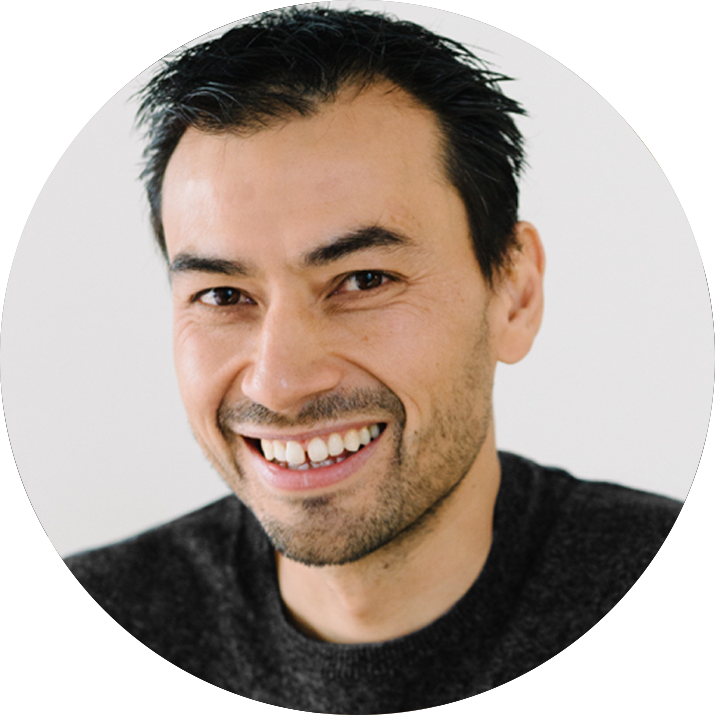 TERENCE TOH
TERENCE TOH
About Us
The Business Coach.
Terence is the founder and Managing Director of StrategiQ Corporation, a serial entrepreneur and experienced business operator who has founded, bought, grown and sold several … see more
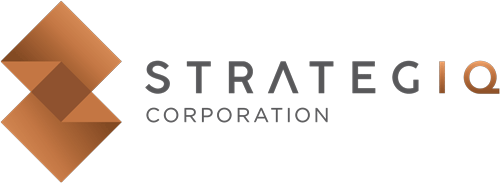
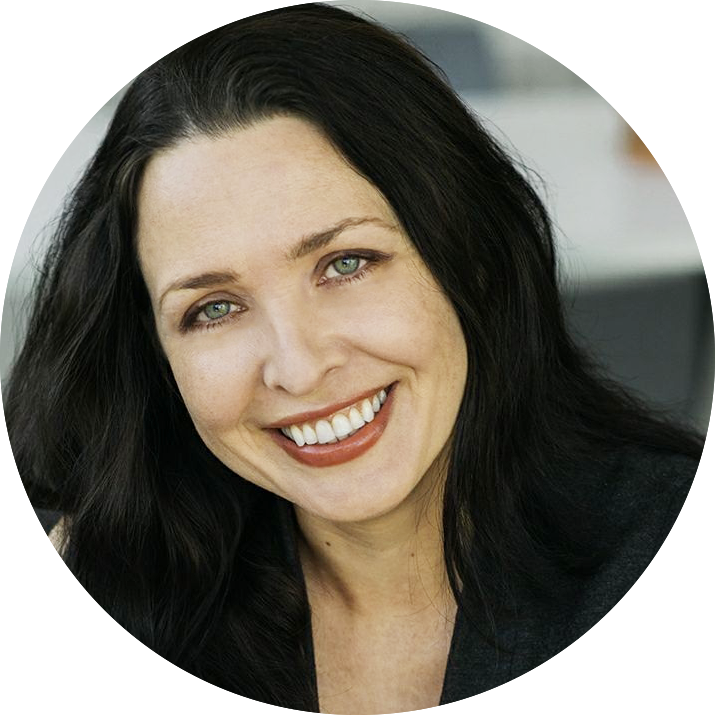 NADIA HUGHES
NADIA HUGHES
About Us
The Super Nerd.
Are you passionate about the ins and outs out of taxation legislation? With Nadia by your side, you don’t need to be. Accounting and financial planning isn’t just her … see more
